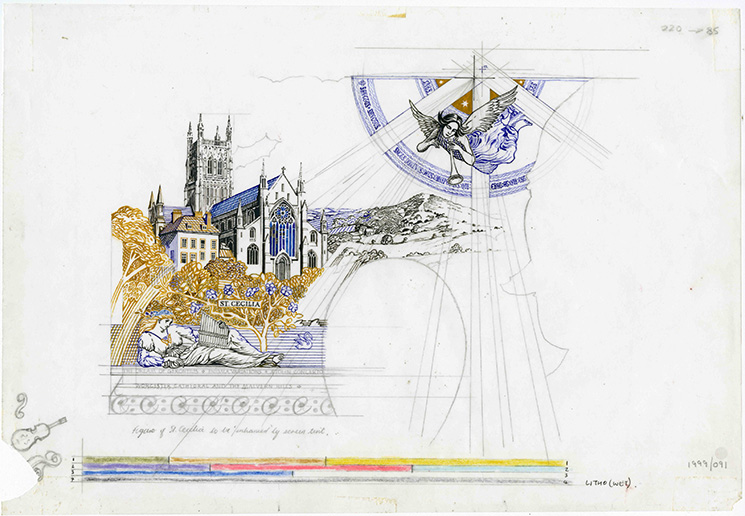Our collection includes design work, printing tests and master drawings for many of the banknotes the Bank of England has produced over time. Banknotes used to be designed by hand but today they are created using computers.
c. 1761
Guide sheet
At first these vignettes, or small decorative designs, of Britannia look identical but there are subtle differences between them.
A different version appeared on each denomination, or value, of banknote to protect against counterfeiting. This card helped Bank of England clerks recognise the 12 different designs.
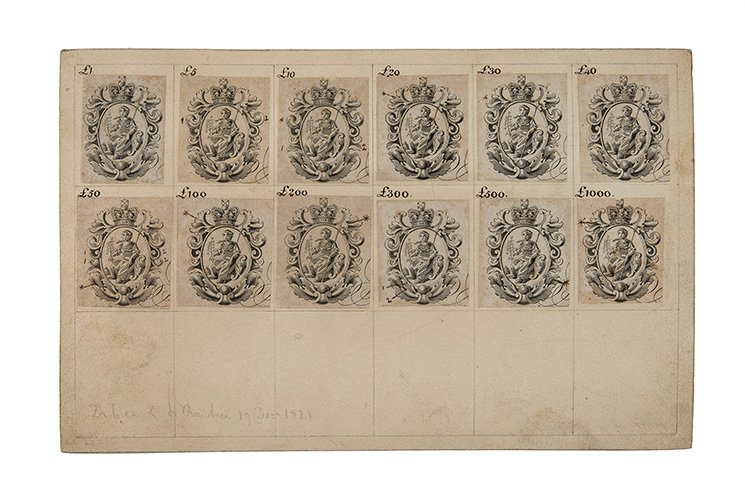
c. 1928
Design for £1 banknote
The 1928 £1 Series A banknote was the first Bank of England note to be produced in colour.
The note’s designer William Keesey made this sketch for it. It shows the Bank’s Threadneedle Street building above a floral design incorporating English roses, Scottish thistles and Welsh daffodils.
Elements of this design can be seen in the finished note.
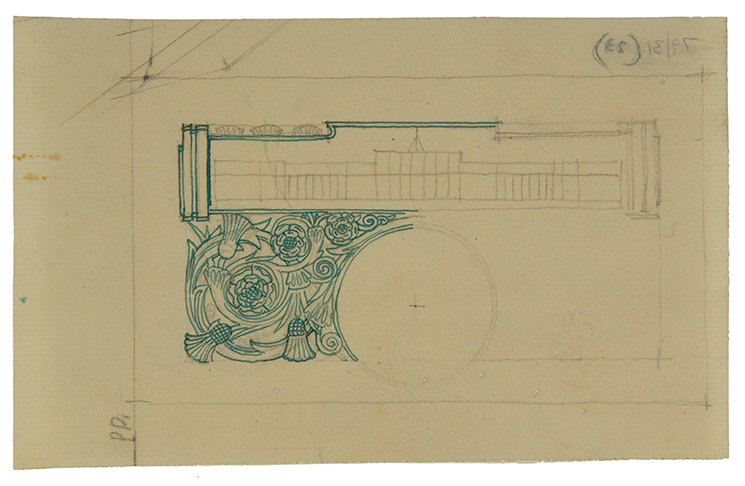
1956
Guide sheet for £5 banknote secret marks
From the early 1900s, banknotes had secret marks in their design to prevent forgery. They were often made to look like flaws in the printing process, which forgers would try to correct.
This guide sheet highlights the secret marks on the 1956 £5 Series B banknote.
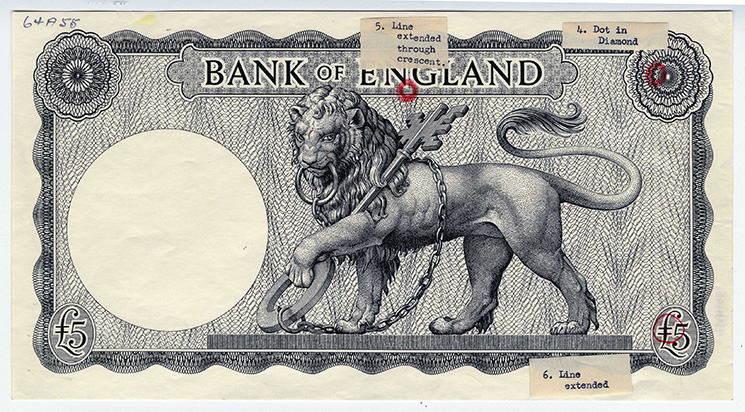
1961
Test prints for £5 and £10 banknotes
New banknote design elements are always tested extensively. These are tests for HM Queen Elizabeth II's portrait on the new £5 and £10 Series B banknotes.
Portraits are a useful security feature for banknotes as the human eye can easily detect changes to an image of a face.
The version on the far right, by designer Reynolds Stone (1909–1979) was selected for the final notes.

1989
Master drawing for £10 banknote
This master drawing by designer Roger Withington is for a vignette, or small decorative design, of Britannia.
It first appeared as a printed vignette in 1993 on the £10 Series E note. When a new £10 note was issued in 2000, the design was re-used as a template for the hologram, a new security feature.
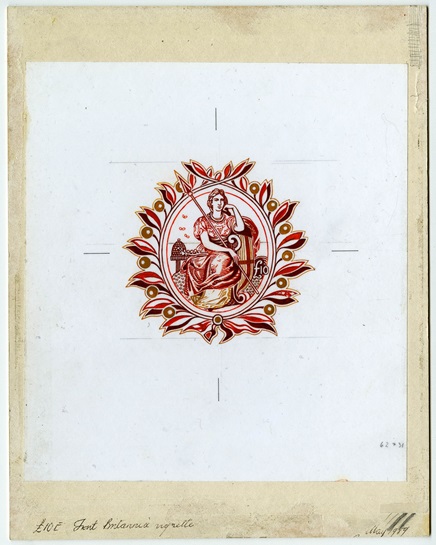
c. 1990
Design for £50 banknote
This design is for the decorative English rose image on the metallic silver foil security patch on the 1994 £50 Series E banknote.
It was the first note to include a foil patch. This security feature was introduced to prevent imitation by colour-copying machines.
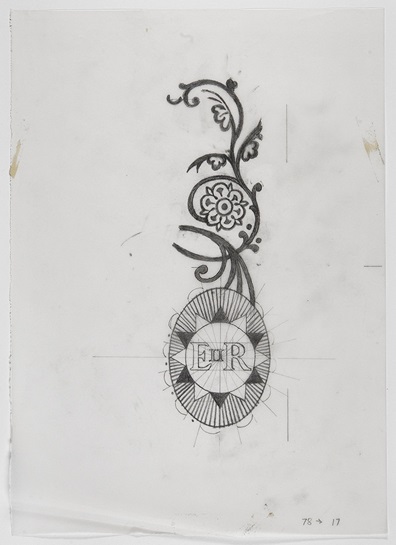
c. 1999
Ink separation test
The inks used on banknotes must withstand frequent handling. The specific combinations of colours help users to identify the denomination of a banknote at a glance.
This printing test was performed for the £50 Series E banknote.
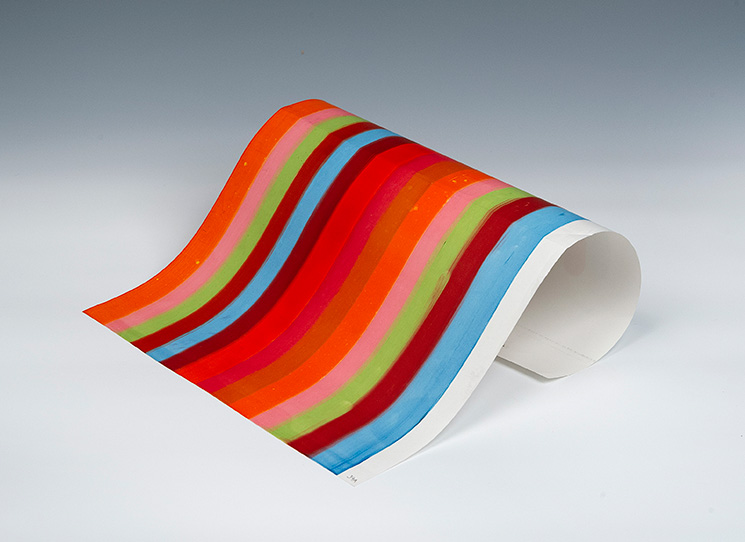
c. 1999
Master drawing
The 1999 £20 Series E banknote featured a portrait of composer Edward Elgar (1857–1934).
This master drawing is for the vignette, or small decorative design, of Saint Cecilia and Worcester Cathedral which featured on the note. Elgar lived in Worcester for most of his life and Saint Cecilia is the patron saint of musicians.
